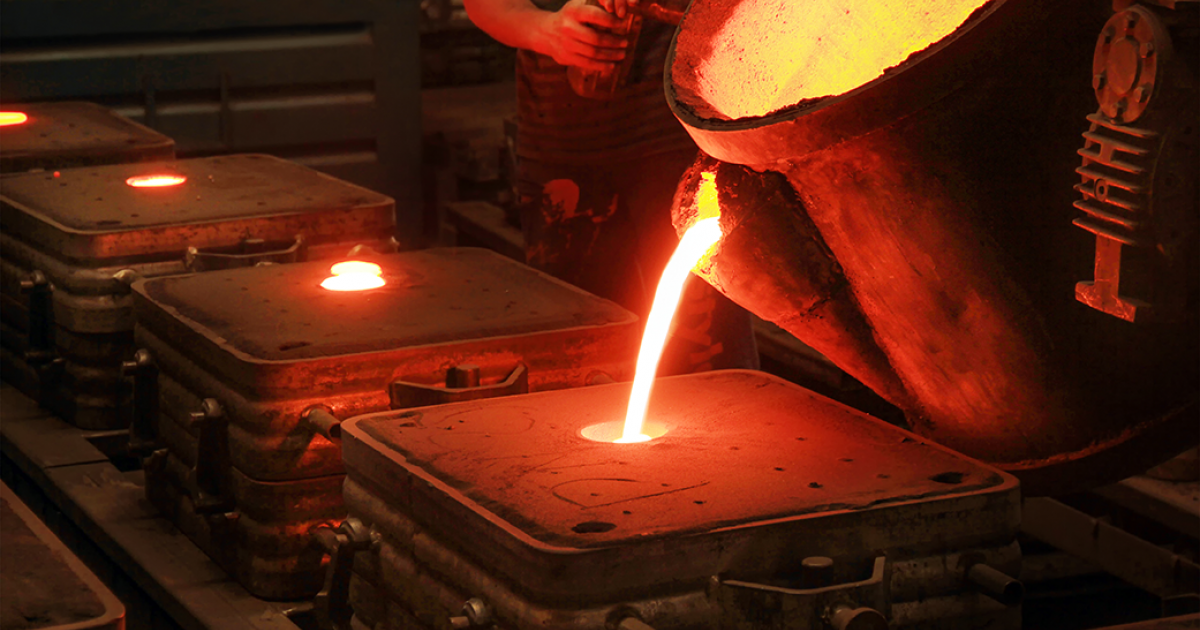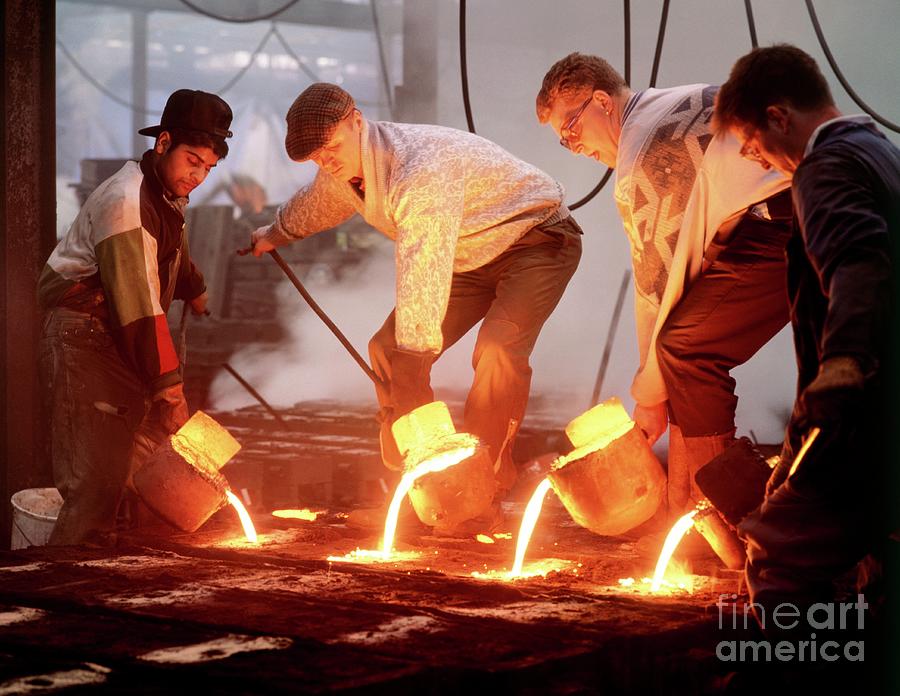Why Sustainability is Influencing the Future of Aluminum Foundry Operations
Recognizing Metal Casting Processes: Technologies and Patterns in the Foundry Industry
The foundry industry is experiencing considerable improvements driven by technical improvements. Technologies such as 3D printing and synthetic intelligence are improving metal casting processes, enhancing efficiency and precision. Sustainable techniques are obtaining traction, stressing the significance of ecological responsibility. In enhancement, the introduction of sophisticated materials and automation is enhancing general casting top quality. These advancements suggest a critical shift in the sector, raising inquiries about future directions and implications for makers.
Advancements in 3D Printing for Metal Casting
Current advancements in 3D printing modern technology have considerably changed the landscape of steel casting. The assimilation of additive manufacturing techniques has enabled the fast manufacturing of facility patterns and molds that were difficult or formerly difficult to attain with typical techniques. By making use of materials such as sand and steel powders, producers can develop complex geometries that boost style versatility and lower product waste. This development not just expedites the prototyping process yet additionally enables for the modification of parts tailored to particular applications.
3D printing assists in shorter lead times, which is necessary in sectors calling for fast turnaround for components. The technology also supports the manufacturing of light-weight structures, therefore enhancing energy effectiveness in final product. Because of this, the foundry sector is seeing a change in the direction of even more sustainable practices, driven by the efficiency and precision offered by these modern-day 3D printing strategies in steel casting processes.
The Function of Artificial Intelligence in Precision Manufacturing
As industries progressively embrace sophisticated manufacturing innovations, expert system (AI) is playing a critical function in boosting precision production processes. AI algorithms evaluate vast datasets to maximize and recognize patterns manufacturing parameters, resulting in enhanced precision and effectiveness. In steel casting, AI aids in predictive maintenance, lowering downtime by forecasting equipment failures prior to they occur.
Moreover, AI-driven simulations enable manufacturers to design the casting process, refining designs and minimizing problems. Artificial intelligence techniques boost high quality control by finding anomalies in real-time, consequently making certain that just items meeting stringent specs proceed with the assembly line.

Lasting Practices in the Foundry Market
Sustainability has actually become a crucial emphasis in the foundry sector, motivating producers to embrace methods that lessen ecological impact while maintaining efficiency - Metal Foundry. One prominent strategy includes the recycling of materials, particularly steels, which substantially decreases waste and power consumption. Foundries are increasingly implementing closed-loop systems, permitting for the reuse of sand and various other casting materials, consequently lessening the requirement for virgin sources
Additionally, energy-efficient modern technologies, such as electric furnaces, are gaining traction, as they reduced greenhouse gas emissions contrasted to conventional approaches. Several shops are discovering the usage of naturally degradable binders and green finishes to decrease hazardous byproducts. Employee training on sustainable techniques has actually additionally ended up being essential, promoting a society of environmental duty within organizations. On the whole, these lasting techniques not just add to environmental preservation but likewise improve the long-lasting feasibility of the foundry sector in a progressively eco-conscious market.
Developments in Products for Boosted Casting Top Quality
With the continual advancement of the foundry market, developments in products have actually come to be important for improving casting top quality. Advanced alloys and composite materials are significantly being made use of to enhance mechanical buildings and decrease problems in spreadings. These materials usually supply superior strength-to-weight proportions and enhanced resistance to corrosion and wear, attending to the demands of contemporary applications.
Additionally, the consolidation of nanomaterials is acquiring grip, permitting finer microstructures that lead to boosted surface finishes and dimensional precision. Aluminum Casting. 3D printing modern technologies also contribute in creating intricate geometries with minimal waste, enabling using customized products that were previously challenging to cast
The advancement of ecologically pleasant binders and ingredients contributes to sustainable techniques while maintaining high-grade end results. Jointly, these innovations not just boost the efficiency of actors items but also straighten with the industry's change in the direction of sustainability and effectiveness.
Automation and Robotics in Metal Casting Processes
Automation and robotics are reinventing steel casting processes by improving procedures and enhancing precision. In modern foundries, robot systems are employed for tasks such as mold handling, pouring, and finishing, significantly lowering human intervention. This not just reduces the threat of mishaps yet also assures regular high quality in production.
Automation technologies, such as computer numerical control (CNC) makers, assist in complex layouts and intricate geometries that were previously challenging to achieve. Real-time data analytics allow suppliers to monitor processes and optimize performance continuously.
The integration website of automation causes enhanced productivity and performance, enabling foundries to meet expanding market demands while lowering lead times. As the market accepts these developments, the workforce is also developing, needing new skills to operate and maintain advanced equipment. Overall, the adoption of automation and robotics is a critical trend shaping the future of steel casting processes.
Frequently Asked Inquiries
What Is the History of Metal Casting Methods?
Metal casting methods day back to ancient civilizations, with evidence of bronze casting in Mesopotamia around 3000 BCE. Over centuries, methods advanced substantially, integrating improvements in products and modern technology, forming contemporary industrial methods.
Exactly How Does Metal Casting Effect the Setting?
Metal casting significantly influences the atmosphere via power intake, discharges, and waste generation. Developments in sustainable techniques and innovations intend to minimize these results, advertising even more eco friendly approaches within the market.
What Precaution Are Essential in Factories?

What Prevail Problems in Metal Casting Products?
Usual problems in metal casting items include porosity, shrinking, misruns, cold shuts, and surface area blemishes. These issues emerge from factors such as inappropriate temperature control, insufficient mold layout, and contamination during the casting procedure.
Just How Do Foundries Make Certain Quality Assurance in Casting Processes?
Foundries carry out extensive quality control measures through routine evaluations, standard testing, process surveillance, and adherence to industry standards. These methods aid recognize defects early, ensuring the integrity and dependability of the last casting products.
Technologies such as 3D printing and artificial intelligence are reshaping metal casting procedures, boosting effectiveness and precision. Recent innovations in 3D printing innovation have significantly changed the landscape of steel casting. Automation and robotics are reinventing steel casting procedures by simplifying procedures and enhancing precision. Metal casting strategies date back to old worlds, with proof of bronze casting in Mesopotamia around 3000 BCE. Typical defects in metal casting products include porosity, shrinkage, misruns, chilly shuts, and surface area flaws.